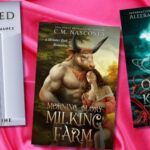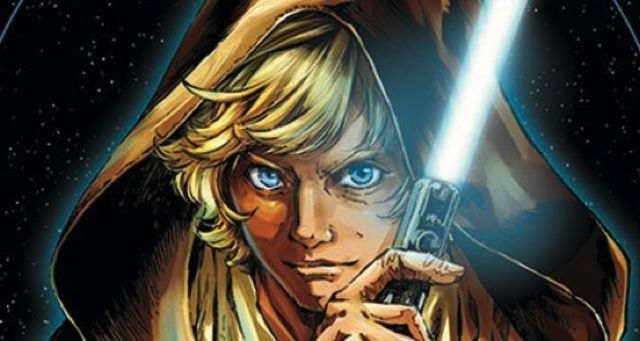
What’s With All of the Star Wars Manga?
Manga versions of Star Wars novels are all the rage these days, particularly as alternative versions of the galaxy’s middle grade and young adult properties. Perennial favorite Lost Stars by Claudia Gray has been adapted into a three volume set by Yasaku Komiyama and Gray’s Leia: Princess of Alderaan as the Japanese webcomic Leia Organa: Ordeal of the Princess. Akira Aoki’s new vision of Star Wars: Rebels S1 is available both online and in print in Japan (Note to to self: learn Japanese). Most recently, Ken Liu’s Legends of Luke Skywalker, a short story collection of Luke-centric tall tales, each spun by a different narrator and intended to fill in the gap between Return of the Jedi and The Force Awakens, has been adapted by Akira Fukaya, Takashi Kisaki, Haruichi, Subaru, and Akira Himeawa (Viz Media).
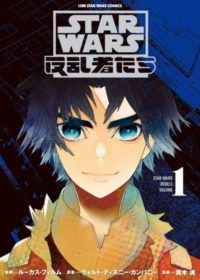 Why read different iterations of the same story? Isn’t that the same thing as reading it twice? I have books I reread every couple of years because I adore them. Fair enough, that’s not everyone’s bag so, returning to the first question: no, not exactly. The joy in reading a story or novel first in prose and then as a manga is similar to the best part of reading a themed anthology: you get an opportunity to see how different creative minds play with the same source material which is always an incredible reminder of the depth and breadth of human neuroplasticity.
Why read different iterations of the same story? Isn’t that the same thing as reading it twice? I have books I reread every couple of years because I adore them. Fair enough, that’s not everyone’s bag so, returning to the first question: no, not exactly. The joy in reading a story or novel first in prose and then as a manga is similar to the best part of reading a themed anthology: you get an opportunity to see how different creative minds play with the same source material which is always an incredible reminder of the depth and breadth of human neuroplasticity.
You’re probably looking for something a little more substantial than “Whoa,” however.
I can do that.
Manga Adaptations Remind Us Reality is Set But Perception is Flexible
Star Wars is a space opera. The characteristics that define that particular sub-genre have been—and continue to be—a matter of debate, but a common thread among the various aggregates is: an epic that takes place, in large part, in space (I know, I broke the “don’t use the word in the definition” rule; my 10-year-old is going to be very disappointed in me), which, as Hitchhiker’s Guide to the Galaxy reminds us, is very, very big. If, as is the case with Star Wars, the property is multi-media, we’re lucky enough to see some of the beings and planets involved, but others we know only from novels, which means their appearances, habits, and social mores are up for interpretation. While crafting our own versions of individuals and cultures is a super fun game and results in often fantastic fan art, there are cases in which the beings are so different from four-limbed, one-headed humans and our quirky, quixotic, ways, we can’t really engage fully until we see them in a comic or manga. Consider the Vulptex or the white and red duochrome surface of Crait.
Of course there’s also every chance the artist is going to change the appearance of a character who has a “canon” look you’re very sure is a constant, giving you the opportunity to consider not everyone interprets facial features, body type, or body language the same way. We’ve been watching Luke Skywalker on film for forty years. If I described him to a sketch artist, I’m relatively confident that person would come up with something that looked pretty to close to my mental picture of said Skywalker. It struck me while reading the Legends of Luke Skywalker manga, however, that one one of the artists on the book could make the same claim and the sketch would look very different from mine and that the same is true for each a sketch made from the description of each of the voice characters in the book.
Like I said above: reality is a constant but perception…that’s a little more flexible.
Manga Adaptations of Prose Works Enhance Accessibility
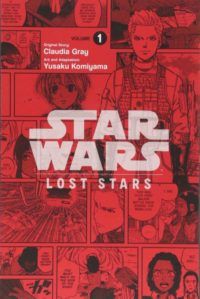 Not everyone is able to make time in their day to read, nor do we all have the same priorities when we do have that free time. Some people prefer to game, others to bake, still others to head to the gym and catch up on recorded shows. Delving into prose, be it a collection of short stories or a longform work, is a time commitment not everyone can or wants to make. That doesn’t mean they deserve to go through life deprived of stories. Manga adaptations use art to fill in setting and background action, significantly reducing the amount of text required to tell, or enjoy, a story of any length. That means fitting a given book into a given schedule block is that much easier.
Not everyone is able to make time in their day to read, nor do we all have the same priorities when we do have that free time. Some people prefer to game, others to bake, still others to head to the gym and catch up on recorded shows. Delving into prose, be it a collection of short stories or a longform work, is a time commitment not everyone can or wants to make. That doesn’t mean they deserve to go through life deprived of stories. Manga adaptations use art to fill in setting and background action, significantly reducing the amount of text required to tell, or enjoy, a story of any length. That means fitting a given book into a given schedule block is that much easier.
It’s also no mistake that many of the Star Wars works being adapted are middle grade and YA. Not all adults read at the same speed and level, and that’s even more true for kids, for a variety of reasons. Stories are fundamental to humanity’s survival, but there have also been multiple studies suggesting that readers are kinder and more empathetic, two very important skills for developing brains to absorb. Meeting kids where they live in terms of reading life allows them to gain that kindness and empathy without the intercessors of frustration, embarrassment, and upset.
It’s Interesting, and Educational, to See Which Story Elements Different Cultures Choose To Emphasize and Which They Choose To Omit
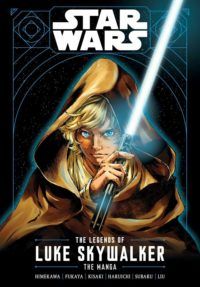 One of the most interesting aspects of reading both Liu’s original work and the manga adaptation is examining which aspects Viz and the creators on the manga version chose to use and which they chose to exclude. While the prose version of Legends of Luke Skywalker has a frame story that ties the various tall tales together (deckhands on a ship heading for Canto Bight), the manga presents the stories as discrete entities without any connection other than Skywalker’s presence. It’s also interesting to note that while the manga has four stories, Liu’s original text has six: the ones that were adapted are those in which Luke is presented as the hero and working for the good of someone other than himself; those excluded are the ones in which it’s suggested he’s a con man or, worse, a criminal, in search of personal gain.
One of the most interesting aspects of reading both Liu’s original work and the manga adaptation is examining which aspects Viz and the creators on the manga version chose to use and which they chose to exclude. While the prose version of Legends of Luke Skywalker has a frame story that ties the various tall tales together (deckhands on a ship heading for Canto Bight), the manga presents the stories as discrete entities without any connection other than Skywalker’s presence. It’s also interesting to note that while the manga has four stories, Liu’s original text has six: the ones that were adapted are those in which Luke is presented as the hero and working for the good of someone other than himself; those excluded are the ones in which it’s suggested he’s a con man or, worse, a criminal, in search of personal gain.
Convinced? Come on, give it a try! That’s what libraries are for. Yes, they have manga there too. Better yet, try it with your kids. Their little minds will explode with the awesome.













